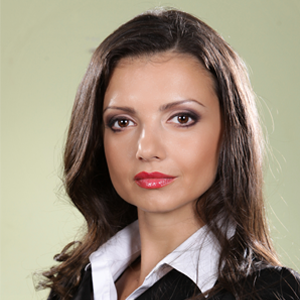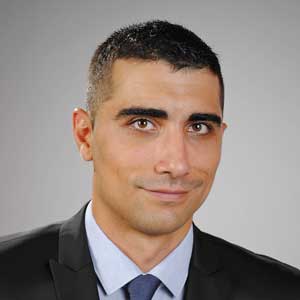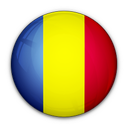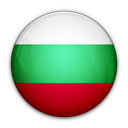

What do the creators of such programs need to know?
The copyright provides protection on the code of the mobile software, but not on the ideas, put into it, and not on the process of operation and communication between the application and the mobile device.
You need to order a taxi, check the weather forecast, make a payment on your consumer credit or write a few lines to a friend. All this is now possible only by some clicks on a smartphone or a tablet. Welcome to the world of the mobile applications. The increasing penetration of mobile technologies in our everyday life has turned the creation of mobile applications into a profitable business niche. Unlike most commercial initiatives in which the assets have been materialized in the form of tangible property, in case you decide to create a mobile application, you will acquire a set of intangible assets, or the so-called intellectual property rights. All this sets on the agenda the question about the nature of these rights and to what extent they are protected by the law.
Copyright
Copyright on mobile applications arises with the creation of the application itself – with its fixation on an electronic carrier so that it can be reproduced and perceived by the consumers. According to the Bulgarian legislation, there is no need of registration for copyright to occur in favour of the author of the mobile application.
On the one hand, the object of copyright protection is the software of the mobile application. It is worth mentioning that the copyright provides protection to the technical expression, the code of the mobile software, but not to the ideas, and the process of operation and communication between the application and the mobile device.
On the other hand, the content of the application, which is displayed on the mobile device, is also subject to protection by copyright. This includes all images, photos, melodies, databases and more, so far as the same are created by the author and are independent works. It happens often that the creator uses an already existing software in the application (if a map is needed, Google Maps might be used for example) or images and melodies, created by other authors. In these cases it is important to check the license conditions of the software for commercial purposes, respectively to obtain permission from the authors of the works.
Practice in this business is the software of the mobile application also to be “written” by a team of programmers, especially hired for this. In such cases it is good to know that copyright does not pass automatically in favour of the owner of the mobile application, although the latter has paid for the creation of the software. A software assignment agreement with the programmer – author of the software is necessary, where it is explicitly stipulated that with its creation the copyright is transferred in favour of the assignor.
According to the Bulgarian law, copyright is protected throughout the whole life of the author, as well as 70 years after that. Copyrights are inheritable and can be transferred (with the exception of some intangible rights).
Trademark
The trademark is the element of the mobile application that identifies its origin and distinguishes it from the others. In practice, the mobile application is identified by its name and logo, as the latter represents the icon you see after its installation. That is why it is equally important that the name and the logo be protected as trademarks, as usually these are registered individually.
The choice of the trademark, however, will have to comply not only with the preferences of its owner, but also with some legal specifics. Thus, some trademarks are stronger than others, when they have to overcome the obstacles for registration – these are the fanciful marks, usually coined words without semantic meaning (such as Skype). The owner of the mobile application would often choose a descriptive name to direct the consumers to the use of the application (e.g. Internet calls), but such name would be highly unlikely to be registered as a trademark, because it does not meet one of the essential requirements – the mark to have a distinctive character. Other important aspects that should be assessed are for which classes of goods and services the mark to be registered and in which countries a protection to be sought. For the answer to these questions a balance between the estimated budget and the need for legal protection should be sought according to the specific business model.
In order to obtain protection in the territory of Bulgaria, the mark should be registered in a special register at the Patent Office. At the same time a Community trademark for the territory of all Member States can be acquired. In the latter case the application may be submitted directly to the Office for harmonization of the internal market of the EU, or by the Bulgarian Patent Office.
What makes the trademark extremely valuable asset of intellectual property, is, that once registered, it can be renewed indefinitely. Moreover, in practice, its owner obtains a monopoly right and can limit the other persons to use it in their commercial activity without righholder’s consent. However, if the owner of a registered mark does not actually use it for five years, it can be invalidated.
Design
The icon of the mobile application (or its logo) can be protected also as design. In this case, the same object can be protected as a trademark and a design, where these two do not compete and can coexist. The owner of both will have a different kind of protection – while the function of the mark is to indicate the origin of the product, the design protects its appearance and functionality.
Consumer interfaces, graphical objects, visual layouts, as well as all other original visual components of the mobile application, can also be registered as designs.
Bulgarian law uses the term “industrial design” and defines it as the visible outer appearance of a product or part of it determined by the features of the form, the lines, the contours, the ornamentation, the colours or a combination thereof. The main requirements for design registration are that it has to be new and original. The registration for the territory of Bulgaria is carried out by the Patent Office, and for the Community – by the Office for harmonization of the internal market. The European legislation provides also protection for unregistered design within 3 years from the date on which the design has become publicly available.
Patent
It has been a long due question, as to whether mobile applications can be regarded as patentable inventions. According to Bulgarian and European legislation computer programs are expressly excluded from the scope of the inventions, subject to patent. In practice, however, it appears that not only computer programs are patentable, but this is one of the fastest areas of growth in the European Patent Office (EPO). The reason for this is that the mentioned prohibition applies to computer programs, as far as legal protection is required for them as such. According to the EPO the question “Is there an invention” must precede all other patentability assessments (novelty, inventive step and industrial applicability), and it tacitly implies the further essential question: “Does the claimed subject-matter have a technical character?” Therefore, in the case of mobile application, the software must be part of or must be incorporated in an invention (technical device, method or system), resolving a technical problem in a new and non-obvious way.
The article has been published in Bulgarian, in Capital Daily.





